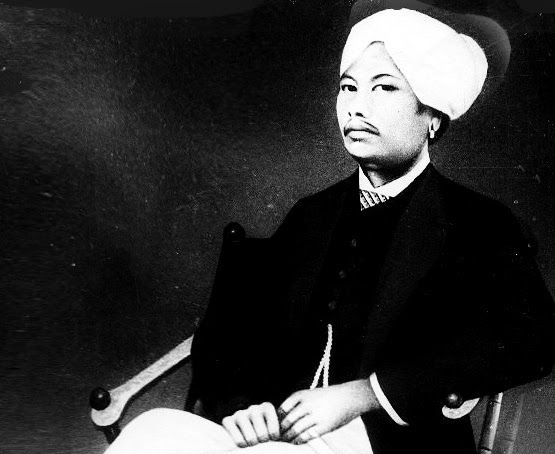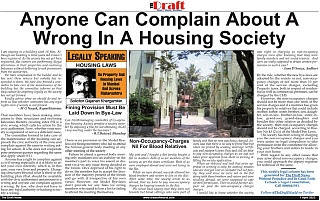Eastern states’ role crucial in freedom struggle
By Ritika Seth
The eastern region of India comprising West Bengal and the North-Eastern states i.e., Arunachal Pradesh, Assam, Manipur, Meghalaya, Mizoram, Nagaland, Tripura and Sikkim have been pivotal in furthering and strengthening India’s independence movement.
 |
| Bir Tikendrajit Singh of Manipur |
Most people are aware of the contributions that the people from Bengal made during the freedom struggle and the landmark events that took place in the region. Very few know of the freedom fighters from the north-eastern states and the battles that the local leaders and kings fought for their independence.
Nevertheless, contributions of people from Bengal and the events that took place in the region have been pivotal in mobilising masses and in guiding the movement at large. Bengal gave many things to the freedom struggle… from writer to fighter, as they say.
Garnering support worldwide
Netaji Subhas Chandra Bose was one of the most prominent freedom fighters who took the fight for freedom beyond borders and garnered worldwide support for the movement. Born on 23 January 1897 in a Bengali family, he studied in Presidency College and in 1920 was sent to England to take the Civil Services Examination there which he cleared with distinction. However, nationalism was a bigger calling for him and when he heard of the turmoil in the country, he returned to India in 1921 to join the nationalist movement led by Mahatma Gandhi and the Indian National Congress.
Bose became the president of the INC in 1938 but after re-election in 1939, the two started to drift apart and Bose resigned as the President. He started the newspaper ‘Swaraj’ and founded the Azad Hind Fauj or the Indian National Army (INA). He also had an all-women regiment named the Rani of Jhansi Regiment.
In April 1941 Bose went to Germany which was under the Nazis at the time. He managed to garner support and sympathy from the leadership for India’s independence movement. Here, a 3,000-strong Free India Legion was recruited from among the Indian POWs captured by Erwin Rommel's Afrika Korps to serve under Bose.
 |
| Netaji Subhas Chandra Bose |
Later, with the help of the Japanese, he revamped the INA comprising Indian PoWs captured by the Japanese in the Battle of Singapore. On 21 October 1943, Bose proclaimed the formation and making of the provisional government of Independent India in Singapore. Netaji went to Andaman which was at the time under Japanese control and hoisted the Indian flag there.
Another freedom fighter Khudiram Bose, born on 3 December 1889 in a small village named Mohobani in Medinipur district of Bengal, was sentenced to death for his role in the Muzaffarpur Conspiracy Case. He was one of the youngest martyrs of the Indian Independence Movement, being 18 years and 8 months old at the time of his hanging.
The power of the pen
Many Bengali writers used their literature to unite people and bring them together to fight for their nation. Bankim Chandra Chattopadhyay was first to portrait India as Bharat Mata. In the 1870s he wrote ‘Vande Mataram’ as an ode to the motherland. It was widely recited and sung during the Swadeshi movement in Bengal.
Great philosopher, composer and poet Rabindranath Tagore’s contribution to the freedom struggle is no less than that in the field of literature. His poem such as ‘Ekla Chalo Re’ inspired many freedom fighters during the independence movement. When the Jallianwala Bagh massacre happened in 1919, Rabindranath Tagore renounced his knighthood.
Popularly known as ‘Master da’, Surya Sen was a revolutionary who was actively involved in Gandhi’s Non-cooperation Movement. His role in the 1930 Chittagong armoury raid in well known where he led a group of revolutionaries to raid the police armoury.
Also known as the Chittagong uprising, it was an attempt to raid the armoury of police and auxiliary forces from the Chittagong armoury in the Bengal Presidency of British India (now in Bangladesh) by armed Indian independence fighters led by Surya Sen. He was hanged on 12 January 1934 for this.
Women were not too far behind in Bengal, such as Matangini Hazra who participated in the freedom movement and was shot dead by the British Indian police in front of the Tamluk Police Station (of erstwhile Midnapore District). Also known as Gandhi Buri, she took part in the Civil Disobedience Movement and got arrested for breaking the Salt Act.
Tribal uprisings dented British Raj
The North-Eastern region of India played a huge role in the struggle for freedom. Here, it were the tribal uprisings that challenged the British stronghold. Towards the end of the 20th century, these uprisings took a more nationalistic form and finally integrated with the larger independence movement in the country.
In 1829, the Khasi tribals that occupy the hills in the region bordering Assam revolted against the British. The British wanted to construct a road that would pass through the territory of Khasi chiefs which the latter didn’t like.
In fact, during the construction of the road, the British forced the Khasis to work as labourers. So, nearly thirty Khasi chiefs decided to take the British out of the hills and the plains of Assam as well.
Tribal chief Bar-Manik (of Molim tribe) led the fight with the support of other chiefs such as Nunklows, Tirut Singh, etc. The revolt that started in 1829 lasted for four years and was finally suppressed and the tribal chiefs surrendered. The British suppressed the revolt brutally even burnt many Khasi villages.
In 1830 and in 1839, members of the hill tribe Singphos of Assam revolted against the British as well. In 1843, Chief Nirang Phidu organised a rebellion that resulted in an attack on the British garrison and the deaths of numerous troops.
Numerous small revolts
The Akas people of Arunachal Pradesh were independent in nature and did not like the British supremacy. So, their chief Tagi Raja raided the British territory and murdered the native official-in-charge of Charduar with 20 of his immediate followers in 1828. The Kapaschor Akas, revolted against the British in 1835 under Tagi Raja and fought till 1842.
On 3 February 1835, he burnt the British infantry outpost at Balipara and later led repeated raids into the plains of British territory in 1837- 39 and 1841. The British government stopped the payment of posa of the Akas, closed the Duars to trade. As a result, Tagi Raja and other chiefs submitted to the British authority by 1860 through the kotokis (official interpreters).
The Nagas in the north-west revolted against the British in 1849. They continued fighting till 1851 but were suppressed. In 1882, the Kacha Nagas of Cachar revolted and, in 1917, the Kukis revolted in Manipur. But both revolts were suppressed. The Great Kuki Rebellion that lasted for three years from 1917 to 1919 was a significant event in the region.
The north-eastern region had great freedom fighters. U Tirot Sing Syiemlieh, who was born in the year 1802, a native chief of Nongkhlaw which is a territory in the Khasi Hills of Meghalaya, led the Khasis in their fight against the British during the 1829-1833 Anglo-Khasi war.
Bir Tikendrajit Singh sacrificed his life along with his General Thangal for protecting the territorial integrity of Manipur. He had led the Manipuri soldiers in the Anglo-Manipuri war in 1891. Tikendrajit was arrested and hanged publicly later.
Born on 6 June 1890, Gopinath Bordoloi not only challenged the British but also made it sure that Assam remained part of India at the time of independence. He eventually became the first chief minister of undivided Assam.



